AJ BOWEN: THE FRIENDLY PSYCHOPATH
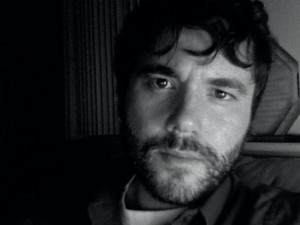 THE FRIENDLY PSYCHOPATH: AJ Bowen Talks About A Horrible Way To Die and What Fun We Were Having
THE FRIENDLY PSYCHOPATH: AJ Bowen Talks About A Horrible Way To Die and What Fun We Were Having
Kier-La Janisse
——————–
Actor AJ Bowen is one of the most in-demand indie actors on the genre scene these days, with recent roles in The Signal, Maidenhead, Hatchet II, House of the Devil, the upcoming Rites of Spring and Among Friends (the directorial debut of scream queen Danielle Harris) and two films playing this year’s Fantasia: Adam Wingard’s A Horrible Way to Die and What Fun We Were Having. Bowen wasn’t able to be with us at the fest this year but we caught up with him by email to chat about the collaborative indie underground and his knack at playing loveable, horrible people.
———————
How did I'm using them for about a year, 3-4 times daily. I've used some other brands before but they didn't work as well as those do. Lowest propecia price: placing an order at our online pharmacy is simple. you end up working so often in the horror genre? Are you a genre fan us discount viagra overnight delivery yourself?
I grew up loving genre fare – it was what I was denied in a fairly conservative, religious household, and that made it very attractive to me, especially at a young age. I suppose it’s biblical – forbidden fruit always tastes the best. Also, the visceral, emotional truth of genre fare has always attracted me – I like being scared, I like being moved on an animal level by art, so it’s always spoken to me. As for it being the area I’ve worked in most, that’s just serendipitous. It’s the part of the industry where people are most likely to take a chance on an unknown actor, and as I’ve continued to be largely unknown, it’s home. It will always be home for me, but as I’ve worked more within genre fare I’ve made a concerted effort to steer towards genre as metaphor, as a motif for raising some questions about what’s going on in contemporary society. I’m not a fan of violence in cinema, and I’m certainly not attracted to gratuitous cheap thrills. I’m a fan of atmosphere, of character driven storytelling, so in so far as I can control what I do (and I’m not always successful at that) I will always try to live there, as a counterpoint to what has devolved more times than get viagra without prescription not into a vapid, empty, torturous studio system of genre junk food.
What do you think is happening that has allowed for so much crossover between straight indie films and horror films in recent years? I’ve noticed a lot of cross-collaboration, especially with the so-called mumblecore crew. I think something revolutionary is actually going on.
The quick answer is that we’re all friends. I’ve been friends with Ti West and Amy Seimetz for years, and when you take your movies on the indie festival circuit, you start to run into the same people who are going through the same experiences as you. If I were to break this down into story concepts, I’d say that it’s just good common sense. Those of us that have made what people call ‘mumblecore’ films are slightly confused as to what exactly the moniker suggests. I mean, I get that people have said it involves 20-somethings talking about their lives in a decidedly non-cinematic way, but almost none of us are in our 20’s anymore. In regards to horror, oftentimes character is discarded for a moment, a beat, an idea or image intended to elicit an emotional response. It seems logical to me that those two worlds would marry to create a more well-rounded story. That way you get character-driven drama that finds itself thrust into visceral human experiences. It allows us as storytellers to completely circumvent traditional cinema and infuse our own sensibilities into a world that is often either purely aesthetic, or purely titillating on an empty level. Also, we all work REAL cheap, which is all we can afford, so we might as well do it with our friends, who we love. I can tell you that if Joe Swanberg called me and needed me I’d be there immediately. He’s like a brother to me. In fact I just did that last week – flying to Florida to shoot a day on a feature Amy Seimetz is directing. She’s like my sister. We’re family. A big, dysfunctional, conflicted, mumblecore, genre family. Just wait until we figure out how to add musical dance numbers. Now THAT’S art.
How did Adam Wingard and Simon Barrett explain the character of Garrick Turrell to you, and in what ways did you contribute to developing the character? He’s such a great character; it’s hard not to empathize with him.
This question literally made me laugh out loud. Simon is my friend, so I know he’ll get a kick out of this answer. At first, I intended to turn the role down. On paper, Garrick was incredibly unlikeable (clearly). I mean, he’s a serial killer. In the early version of the script I read, there was a lot of graphic violence, and Garrick seemed to relish those acts of brutality. I wanted no part of that. In fact, there are 2 reasons why I played Garrick. The first, and biggest reason, is that another mutual friend of ours, Calvin Reeder, who they intended to have play the role, got hung up with other work and they needed to recast. Immediately, as I got the call and was in Missouri shooting within ten days, at most, which is atypical for me. Second, Adam told me during our first conversation that Joe and Amy were involved. I was actually on the phone with him to turn it down – not because I felt it was beneath me, I’d just played a violent guy a couple times before and felt exhausted by it. I didn’t want to do it again. And Garrick was easily the least sympathetic, meanest character I’d ever read in a screenplay. I didn’t see what I could do with that, and really had no interest. Until Adam and I spoke, and I found out who else was in the cast, and found out Adam and I had both recently read the same book about Ted Bundy. This conversation led to a discussion about the duality of man, and this strange fascination we had with someone who could be a loving son, and partner, an upstanding member of society, and ALSO have another life. In this case the differences were dramatic, but I started to see that as a challenge. How do you humanize the inhuman? I thought there was a story there, and so did Adam, and much to his credit, Simon, and we started talking about trying to parallel Garrick’s violence with Sarah’s alcoholism. I really wanted to make sure that we were giving as much weight to the love Garrick was capable of as well as the terrible atrocities he was capable of committing. We discussed that we’d never really seen or heard about someone prone to violence who desperately wanted to not have that impulse. It seemed like a new, darkly human area we could explore. If we all did our job people will walk away not necessarily liking Garrick, but hopefully understanding there is a fine psychological line between reason and insanity.
You’ve played a few characters kind of like this – friendly killers- but Garrick definitely seems the most fleshed out and intense. What kind of prep did you have to do to get into the role?
Ah, typecasting. I did a lot of reading about addiction – to be perfectly honest, once we were taking that angle with Garrick, I really felt like I understood him. We’ve all been in love with someone who isn’t right for us, we’ve all walked paths that were unhealthy, in some shape or form, so I took away the highly dramatized stakes of violence and murder and tried to replace them with those that were personal to me. Amy and I both viewed Sarah and Garrick as Sid and Nancy – they couldn’t be together, and they couldn’t be apart. They ruined each other for anybody else with the level of unhealthy infatuation they harboured for one another. I also spent a lot of time alone – it seemed like someone with that affliction (which I definitely wanted it to be – a disease), would have no one to talk to about it, no 12 step program they could enrol in, so they’d be hopelessly lost inside of themselves. Suffice to say, it was not the most enjoyable preparation of my career. But I do think it was necessary.
One of the amazing things about Amy Seimetz’ performance is that she’s able to convey this massive degree of guilt over having feelings of love for a ‘bad’ person. Do you think, in a perfect world, they’d end up back together again, or is there another way for them to heal? Would you like to see Garrick be forgiven?
That’s the sequel. It’s a Hope-Crosby style road picture. Like Ishtar. 😉 I think that, as with most addicts, one of the first steps towards healing is to be able to forgive yourself, to love yourself. I believe Sarah has that hope, that potential. I’m not sure that Garrick is capable of that, given the extreme nature and depth of hurt he’s caused. Perhaps his only absolution can come from self destruction. I’m not sure that Garrick deserves forgiveness, but I certainly feel he doesn’t deserve damnation. His hell is self-induced.
What kinds of things in relationships do you consider deal-breakers? I’m guessing clandestine nocturnal killing sprees might be one of them.
I’m a pretty laid-back guy. You shouldn’t kill people, you should try to leave the world a better place than you found it, and be service to the people you come across and love. But I’d never be with anyone that doesn’t love 80’s cinema, or that eats miracle whip. Those are absolute deal breakers.
What is continuing fascination people have with serial killers?
It’s the macabre, it’s foreign, it’s scary. For most people it’s a monster wearing a human mask. The ability to do such horrific, bad things and still be a living, breathing human being fascinates. I suppose it’s not too dissimilar a response from people who are driving past a terrible automobile accident and slow down – the parents tell their children not to look, yet the parents do just that – look, intently, for something grotesque, even though that’s not something you’d want to see or wish inflicted upon another person. Carnival mentality, I suppose.
Can you tell me about your character in What Fun We Were Having – I understand the dialogue was all improvised?
To be honest, the dialogue in both were fairly improvised, though in What Fun We Were Having, there was none written beforehand. Adam told me a very general idea, then we went to Wal-mart, I found a Hawaiian shirt, and from there, everything sort of took care of itself. 😉 We discussed the idea that we were not trying to make this guy a believable hypnotist. We instead decided he was magic. So in that regard, my portion of the anthology is a whimsical fantasy piece. All I can tell you is my mother laughed hysterically at it.
Do you have any more films in development under your Normaltown banner?
I’m in the middle of a couple scripts I’m going to produce – additionally, Joe and I are continually passively aggressively developing our 80’s buddy cop action comedy (I’m not kidding), Amy and I are still trying to make our rated-PG Christmas movie, and I’m sure Simon or Adam have something for me to do where I inflict violence on undeserving women in an attempted disarming, charming way (to varying degrees of success)…
—————
A HORRIBLE WAY TO DIE screens July 26th at 9:30pm and July 28th at 2:25pm in the Salle JA DeSeve with director Adam Wingard and co-writer Simon Barrett in person. More details on the film page HERE.
WHAT FUN WE WERE HAVING: 4 STORIES ABOUT DATE RAPE has its World Premiere on July 27th at 7:50pm and screens again July 30th at 12:30pm in the Salle JA DeSeve with director Adam Wingard and co-writer Simon Barrett in person. More details on the film page HERE.

 July 27, 2011
July 27, 2011 
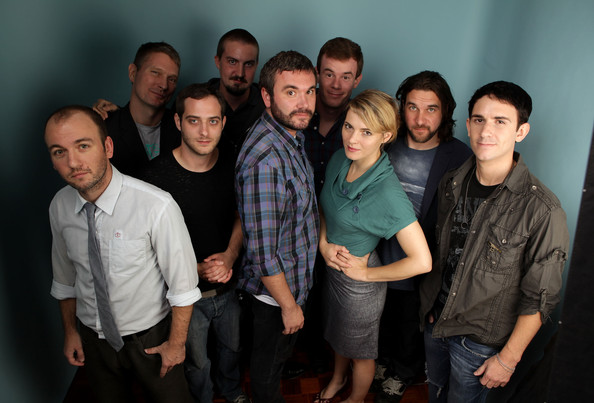
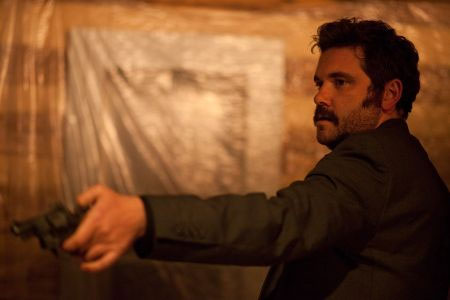
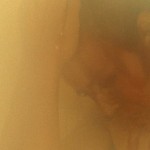

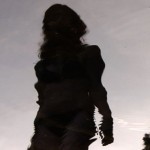
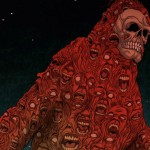



Comments